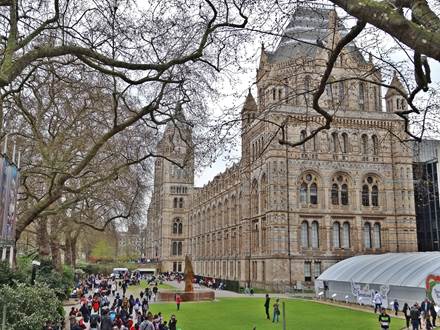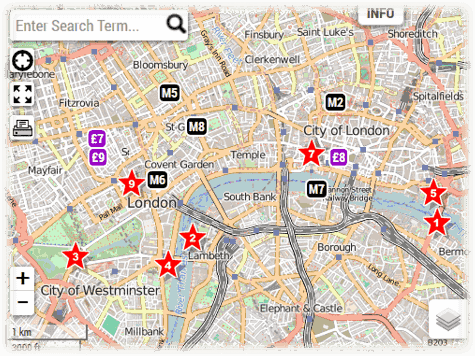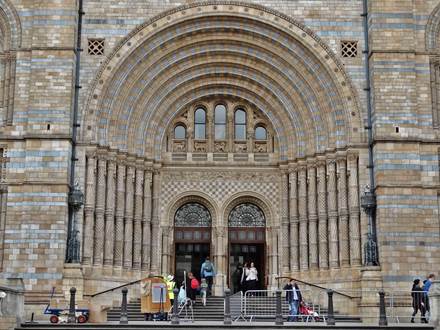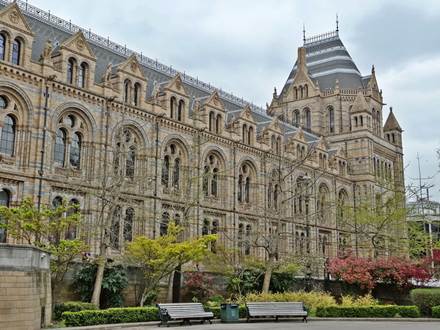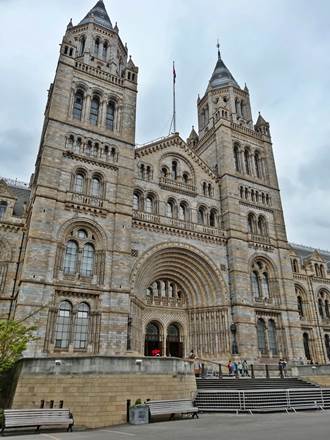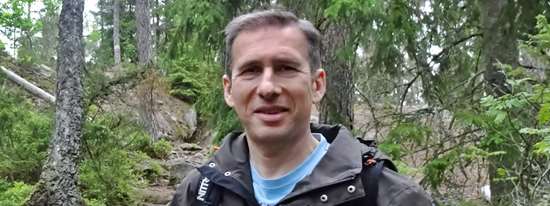Natural History Museum London
Free Entrance
Reachability:
London underground station South Kensington, Piccadilly Line, Circle & District Line, Zone 1
Opening times:
Open daily from 10:00 till 17:50 o'clock. Entrance till 17:30 o'clock. Closed from 24th till 26th of December. (link to homepage at the end of the article)
Tip: At certain times the museum can get quite full. You should have the best chances for short waiting times when you start your visit from Monday to Friday in the early afternoon and at weekends and during holidays in the morning after opening.
Visitor Information:
The entrance fee for the permanent exhibitions is free of charge as in many other public museums in London. A pedestrian tunnel leads directly from the underground station South Kensington to the garden area in front of the Natural History Museum. Perfect suitable for a visit during rainy weather. Though, you have to expect lots of visitors on a rainy day. Especially at the entrance a visitor rush may cause some waiting times. But even if the weather is fine, it usually gets quite busy in the morning during the week because of many school classes. On weekends the rush normally starts in the late morning. Plan your visit accordingly.
The museum is home to over 70 million exhibition objects. For a better overview the permanent exhibitions are color coded and grouped in 4 areas: Blue Zone, Red Zone, Green Zone and Orange Zone. The impressive exhibition objects together with some particularly exceptional highlights are an exciting program for children and interested adults.
Do not miss the Highlights at the Natural History Museum in London:
1. The Dinosaurs gallery (Blue Zone) is worldwide known and belongs to the main attractions at the museum. Have a close look at the huge dinosaur skeletons which are exhibited. Among them you will find the first ever found T-Rex skeleton and the skeleton of an Iguanodon, which belongs to the oldest dinosaur genera.
2. The animated T-Rex (Blue Zone) has been built under the guidance of some dinosaur experts from the museum. With the help of sensors the approx. 8 m long model is able to react on visitors. The T-Rex model is able to swing its head, tear up the mouth, move the tail and roar fearsomely. Guaranteed highlight for all dino fans.
3. The earthquake simulator (Red Zone) demonstrates you vividly the impacts of and earthquake. A room which shows a recreated area of an Japanese supermarket in Kobe simulates an earthquake of the year 1996. Inside this room you will be able to see and feel the forces of an earthquake while you get properly shaken.
4. The Cocoon (Orange Zone) is an 8 floors high building in the form of a silk cocoon. It is surrounded by a rectangular glass facade and was opened as an extension of the Darwin Center in the year 2010. Millions of insect specimens and plant samples are stored in this modern part of the museum. A lot of them are exhibited in the public spaces of the cocoon building. The diversified and contemporary presentation with interactive stations distinguishes this part of the museum.
Link to Natural History Museum London:
www.nhm.ac.uk

